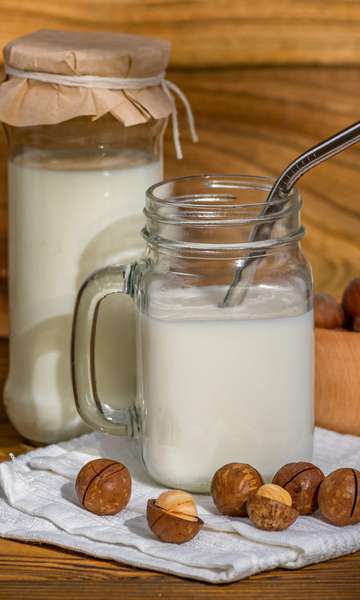Important not only during childhood, different types of milk are part of the diet in adulthood
A source of fats, carbohydrates, proteins, mineral salts and fats, milk is essential for human nutrition and development from the first moments of life, after all it is the basis of mammals’ nutrition. Important not only in childhood, it continues to be part of the adult diet.
According to 2019 survey published by the Brazilian Agricultural Research CorporationEmbrapa, “on average, 116.5 kilos of milk (equivalent to 113.11 liters) are consumed by each inhabitant per year, and this quantity has increased at rates of 1.2% per year”.
However, as vital a source of nutrition as it is, there are people who place dietary restrictions on milk itself. According to a study conducted by the Genera laboratory, 51% of the Brazilian population tends to develop lactose intolerance, the main sugar found in milk. A person with this diagnosis has the inability to digest lactose due to a deficiency or absence of the enzyme lactase, responsible for digesting this nutrient.
Another particular case would be that of a person who is losing weight. According to Órion Complex nutritionist Karine Lima, a person who loses weight tends to lose muscle mass. Therefore, it is very important that they reach the recommended amount of daily protein to maintain this muscle tissue.
“It’s interesting to know that this goal can be achieved by avoiding the consumption of calories that come, for example, from sugars and fats present in whole milk,” she says.
To address these situations, the dairy industry has developed alternatives.
Whole milk
Whole milk is the closest type of milk to its natural state. It contains all the nutrients and fats found in raw milk, generally with a fat content around 3.5%.
It provides a significant amount of fat-soluble vitamins, such as vitamins A, D, E and K, which are dissolved in milk fats.
Semi-skimmed milk
Semi-skimmed milk is a reduced version of whole milk, with about 1.5%-2% fat. It offers a reduction in fat and calories compared to whole milk, but still maintains a rich nutritional profile.
It is a good alternative for those who want to reduce fat without giving up much of the flavor and nutrients found in whole milk.
Skimmed milk
Skim milk has virtually all the fat removed, resulting in a fat content of less than 0.5%. It is ideal for those watching their calorie and fat intake and retains most of the nutrients, such as protein and calcium, found in whole milk.
Milk A2
A2 milk is produced from cows that produce only the A2 beta-casein protein, rather than the A1 beta-casein found in conventional milk.
It may be easier to digest for some people who are sensitive to conventional milk, although it is not suitable for people with lactose intolerance.
Lactose-free milk
Lactose-free milk is made to remove or break down lactose, the natural sugar in milk, making it suitable for people with lactose intolerance.
It allows people with lactose intolerance to enjoy milk without suffering from digestive symptoms such as bloating, gas or diarrhea, while maintaining the nutritional profile of normal milk, including protein, calcium and vitamins.

10 Plant-Based Milks for Lactose Intolerants
Source: Terra
Ben Stock is a lifestyle journalist and author at Gossipify. He writes about topics such as health, wellness, travel, food and home decor. He provides practical advice and inspiration to improve well-being, keeps readers up to date with latest lifestyle news and trends, known for his engaging writing style, in-depth analysis and unique perspectives.







